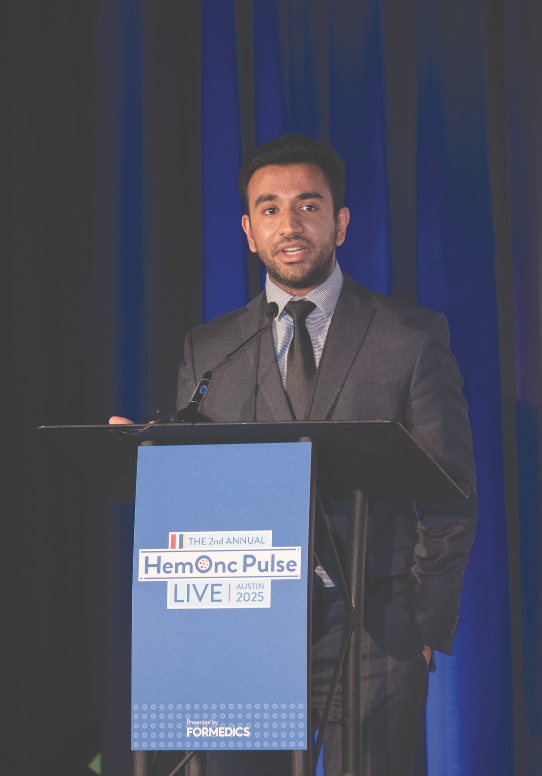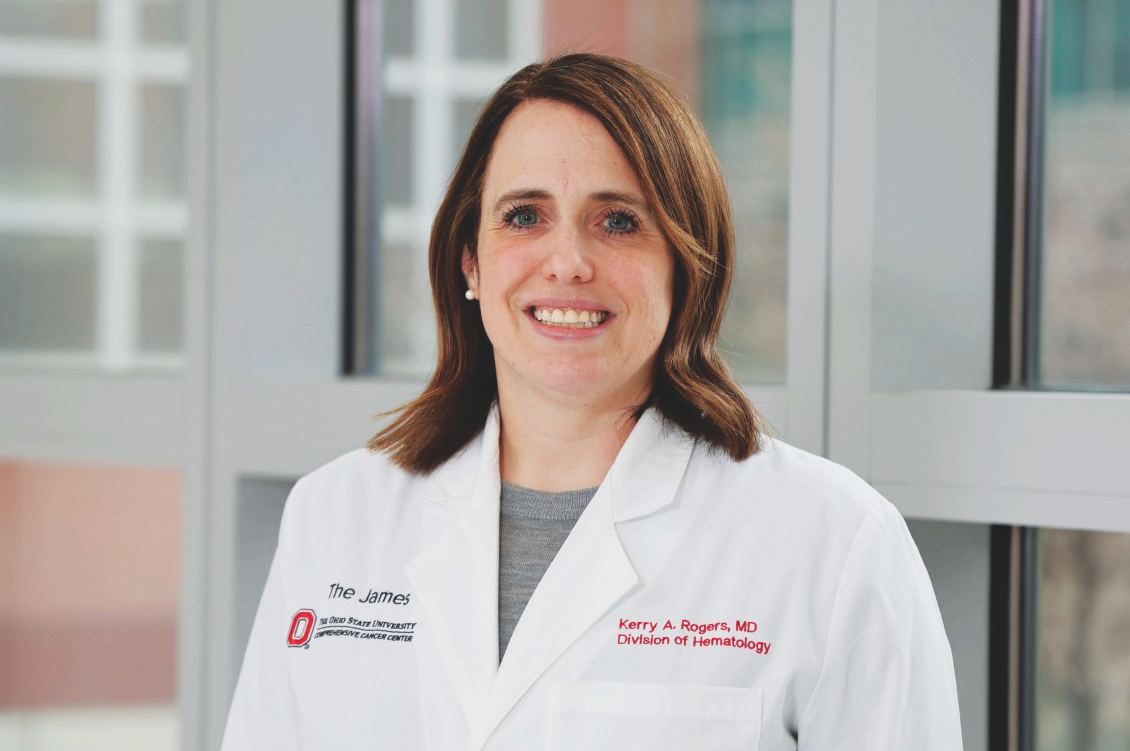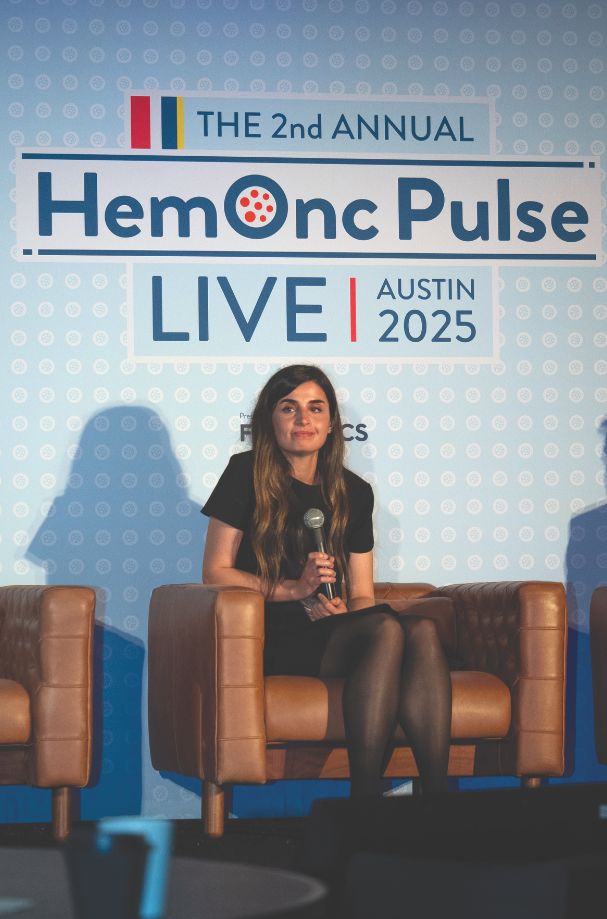
Experts discuss areas of progress and where more work is needed to establish a standard of care
Mantle cell lymphoma (MCL) is a unique and distinct subtype of B-cell non-Hodgkin lymphoma (NHL) characterized by the chromosome 11;14 translocation that juxtaposes the cyclin D1 gene to the immunoglobulin heavy chain gene.
“MCL is a B-cell NHL that combines some undesirable features,” said Jia Ruan, MD, PhD, Professor of Clinical Medicine at Weill Cornell Medicine in New York. “MCL can be quite aggressive, but unlike other aggressive lymphomas such as diffuse large B-cell lymphoma (DLBCL), it remains incurable.”
Much progress has been made recently to improve outcomes of patients with MCL, including optimization of chemoimmunotherapy-based first-line options and the introduction of targeted therapies in the relapsed and refractory disease settings. Despite these improvements, there are still several areas of unmet need. Researchers continue to study how best to use available treatments and discover new ones for this patient population.
Frontline Optimization
The optimization of frontline treatment of MCL happened on two paths, according to Dr. Ruan. The first path was in young, fit patients. In this group, one of the most significant advancements in the treatment of MCL in the last 20 years was the incorporation of autologous hematopoietic stem cell transplantation (AHSCT).
“In a study published almost 20 years ago, it was demonstrated that incorporation of autologous transplant prolonged progression-free survival (PFS) compared to patients who don’t complete autologous transplant,” said Jonathon B. Cohen, MD, MS, Associate Professor in the Department of Hematology and Medical Oncology at Emory University School of Medicine.
To continue to improve on outcomes seen with this approach, studies tested different induction therapy regimens, adding drugs such as cytarabine and rituximab to the chemotherapy backbone with the R-CHOP (rituximab, cyclophosphamide, hydroxydaunorubicin, oncovin, and prednisone) and R-DHAP (rituximab, dexamethasone, cytarabine, and cisplatin) regimens.
“We observed improved remission rates and improved PFS and event-free survival,” Dr. Ruan said.
Outcomes were improved further with the subsequent addition of rituximab maintenance.
“In the last five years or more, this has become the standard pathway for those younger patients,” Dr. Ruan said.
The second path that required optimization was in older patients or those who were unwilling or unable to undergo transplant. In patients who are unable to undergo intensive induction regimens, optimization of frontline therapy has been explored using targeted therapies that have had success in the relapsed/refractory setting.
These therapies include three Bruton’s tyrosine kinase (BTK) inhibitors: ibrutinib, acalabrutinib, and zanubrutinib; the immunomodulatory agent lenalidomide; and the proteosome inhibitor bortezomib.
“All three BTK inhibitors work quite well, especially when administered after first relapse,” Dr. Cohen said. “All three are also well tolerated; although, of late we have identified some differences in side effect profiles that might lead us to use one versus another.”
One of the first regimens explored in the frontline setting was what is called the R2 regimen: lenalidomide and rituximab. Dr. Ruan and colleagues conducted a single-arm study in patients with untreated MCL and treated them with induction and maintenance with lenalidomide plus rituximab. Initial data showed an overall response rate (ORR) of 92% and a complete remission rate of 64%. The five-year estimated PFS and overall survival (OS) were 80% and 90%, respectively.1
“Another pathway explored doesn’t involve maintenance but introduces bortezomib as an induction addition to chemoimmunotherapy,” Dr. Ruan said.
A phase III study explored VR-CAP (bortezomib, rituximab, cyclophosphamide, doxorubicin, and prednisone) compared with R-CHOP in transplant-ineligible patients with newly diagnosed disease and showed an OS benefit with VR-CAP (90.7 vs 55.7 months).2
Michael L. Wang, MD, Professor in the Department of Lymphoma and Myeloma at the University of Texas MD Anderson Cancer Center, presented the long-awaited results of the SHINE study at the 2022 American Society of Clinical Oncology Annual Meeting. SHINE compared ibrutinib plus bendamustine and rituximab in frontline treatment.
“It took almost 10 years for the study data to mature, and the trial showed a very robust improved PFS, with a net benefit of 2.3 years,” Dr. Wang said.
Median PFS with ibrutinib was 80.6 months compared with 52.9 months with bendamustine and rituximab alone (hazard ratio [HR], 0.75; 95% CI, 0.59-0.96; P=.01).3
“If you have a PFS of 6.8 years, the OS for these patients will be approaching 10 years, similar to what is seen in younger, fit patients treated with intensive regimens,” Dr. Wang said. “This is a great outcome for older patients with newly diagnosed MCL.”
The ECHO study will look at bendamustine plus rituximab with or without acalabrutinib in the same patient population.4
Dr. Wang and colleagues are also exploring the use of ibrutinib plus rituximab as a lead in followed by consolidation with rituximab-HyperCVAD (hyperfractionated cyclophosphamide, vincristine, doxorubicin, and dexamethasone). The single-center, phase II WINDOW-1 trial yielded high, durable overall responses and complete responses.5
The WINDOW-2 study added venetoclax to the WINDOW-1 lead-in regimen. Ibrutinib is also being studied in combination with venetoclax in one arm of the SYMPATICO study, Dr. Wang said.
Despite the progress, a completely chemotherapy-free frontline option has not yet become available, according to Tycel Phillips, MD, Associate Clinical Professor in the Department of Hematology and Hematopoietic Cell Transplantation at City of Hope in Duarte, California.
“All of the completed, large phase III studies using BTK inhibitors have combined them with chemotherapy,” Dr. Phillips said. “There have been several small studies looking at these drugs alone in elderly patients but for those who would qualify for an [AHSCT], the currently completed studies in the US have used BTK inhibitors in combination with chemotherapy or used chemotherapy as consolidation. There was a smaller study completed in Europe, the OASIS study, that did not include chemotherapy, but overall, we haven’t quite hit that chemotherapy-free situation yet.”
High-Risk Patients
Another area in the treatment of MCL that currently lacks an established standard of care is the treatment of high-risk patients, according to Dr. Phillips.
“These patients can include those who harbor certain genetic alterations such as p53 mutations or deletions, those with complex karyotypes, those with certain other genetic alterations as outlined in a publication by Dr. Preetesh Jain, MD, from the University of Texas MD Anderson Cancer Center, or those with blastoid/pleomorphic variants,” he said. “We are finding out from retrospective studies that these patients have historically not done well with the currently utilized up front regimens for MCL.”
It is estimated that at least 25% of patients with MCL will have these high-risk features.
Dr. Phillips said that when treating patients with these high-risk features, he typically goes straight to second-line options like BTK inhibitors. Once relapse occurs, these patients are the ideal candidates to move right to second-line chimeric antigen receptor (CAR) T-cell therapy.
“If a patient has small tumors or is at low or moderate risk, we know the patient might be able to respond to BTK inhibitors for a long period of time; therefore, in low- or moderate-risk disease, we reserve CAR-T,” Dr. Wang said. “In high-risk, CAR-T is needed upon relapse.”
CAR-T is the only therapy that has demonstrated a durable response in these patients, according to Dr. Phillips. However, even with CAR-T—unlike in DLBCL—it has not yet been determined if a response plateau exists.
“These patients are still relapsing even after complete remission,” Dr. Phillips said. “We have a long way to go in this patient population to get to where we would like to be, which is long, durable responses.”
Dr. Wang said that with the increasing availability of genetic information in these patients, clinicians will be able to draw more conclusions about the efficacy and toxicity of treatments to best guide therapy.
“We are still far from that, but data are emerging,” Dr. Wang said.
Role of Transplant
The ongoing role of transplant in MCL is also an evolving field right now, Dr. Ruan said.
“There are novel agents being experimented with in earlier lines of treatment that might push back or be used instead of transplant,” Dr. Ruan said.
For example, the TRIANGLE study was designed to evaluate whether ibrutinib added to induction and maintenance with or without AHSCT might improve outcomes in young, fit patients with untreated MCL. At the time of publication, results from the TRIANGLE study were available in abstract form ahead of the 2022 American Society of Hematology (ASH) Annual Meeting. Results supported the use of ibrutinib in first-line treatment, but the researchers wrote that more follow-up is needed “to clarify the role of AHSCT in the context of ibrutinib-containing treatment.”
The trial randomly assigned patients to three cycles R-CHOP/R-DHAP without (arm A) or with ibrutinib added to R-CHOP cycles and two years of maintenance (arms A plus I, I). Arm A failed to show superiority over Arm I for the primary outcome of failure-free survival at three years. A plus I was superior to A, with a three-year failure-free survival of 88% compared with 72% (HR, 0.52; P=.0008).6
Another study being conducted by the Eastern Cooperative Oncology Group and the American College of Radiology Imaging Network Cancer Research Group will look at the role of transplant incorporating the use of minimal residual disease (MRD). The phase III trial will compare maintenance rituximab after HSCT with rituximab maintenance alone in patients with MRD-negative MCL in first complete remission.7
In the absence of any definitive data, Dr. Ruan said that clinicians try to apply the best available data to help guide treatment decisions.
“If someone wants definitive treatment and prefers to have a finite treatment course without the bother of taking pills or being on a clinical trial, there will continue to be a role for AHSCT,” Dr. Ruan said. “The role of transplant going forward is a question on everybody’s mind.”
Options After BTK
Another area of MCL management with no clear standard of care is patients with MCL who progress after treatment with BTK inhibitors. These patients have poor prognosis, according to Dr. Wang.
“The majority of studies show that these patients have less than one year to live,” Dr. Wang said. “Current therapies in this population have low efficacy.”
The most durable U.S. Food and Drug Administration-approved option for these patients, according to Dr. Wang, is CAR T-cell therapy with brexucabtagene autoleucel.8 The July 2020 approval of brexucabtagene autoleucel was based on results of the phase II ZUMA-2 trial that evaluated the therapy in patients with relapsed or refractory disease after receipt of up to five previous therapies. All patients had to have received a BTK inhibitor. At a median 12.3 months of follow-up, 57% of patients in the primary efficacy analysis were in remission. The estimated 12-month OS was 83%.9
Three-year follow-up data showed a complete response rate of 68%, with a median duration of response of 28.2 months and a median OS of 46.6 months.10
“If the patient cannot go to CAR T-cell therapy or undergoes CAR T-cell therapy and progresses, that is a very challenging group of patients,” Dr. Cohen said. “Those are the people—all things being equal—that should be considered for clinical trials.”
Dr. Phillips noted that there are also several promising options for patients who progress after BTK inhibitors that are in clinical trials. One such promising agent is the non-covalent BTK inhibitor pirtobrutinib, which was studied in both the BTK-naïve and refractory setting. The phase I/II BRUIN trial investigated its use in 323 patients with B-cell malignancies. Of those patients, 100 BTK-pretreated patients were enrolled, and this group of patients had an ORR of 52%.11
“Since BTK resistance in MCL isn’t typically due to a binding site mutation, we wouldn’t look at the mechanism of action of pirtobrutinib and conclude that we know why the agent is still effective in these patients,” Dr. Phillips said. “There is some speculation as to why the agent is effective in BTK-refractory MCL, but there is nothing definitive about why it works.”
There are also some early data on bispecific antibodies targeting CD20/CD3. The one with the most robust data to date is glofitamab, and there is evidence that it may work in the BTK-refractory patient population.
Last year, Dr. Phillips presented data from a study of glofitamab combined with obinutuzumab pretreatment in patients with relapsed or refractory MCL, including some with prior BTK inhibitor exposure. The ORR was 81%, with a complete metabolic response rate of 66.7%. Patients with and without prior BTK exposure had similar response rates.12
“These therapies, in a much smaller sample size, seem to be as efficacious as CAR T-cell therapy in these patients with the safety profile that appears to be much better in MCL, but we need larger studies to confirm both points,” Dr. Phillips said. “If the efficacy and safety of these drugs remains consistent in the larger trials, these will more than likely move ahead of CAR T-cell therapy in this patient population.”
ROR1-directed therapies are another promising option, according to Dr. Cohen.
“There is an ROR1-directed monoclonal antibody and an ROR1-directed antibody drug conjugate that both seem interesting but are not available right now outside of a clinical trial,” Dr. Cohen said.
The monoclonal antibody zilovertamab combined with ibrutinib yielded an ORR of 81% in a small study of 26 patients with MCL; the response rate was 80% in patients with prior ibrutinib treatment.13 A phase I study of the antibody drug conjugate zilovertamab vedotin in patients with NHL yielded an ORR of 53% among patients with MCL.14
Future Possibilities
There is much ongoing research to continue to improve outcomes for patients with MCL, to develop chemotherapy-free regimens, and to overcome resistance to existing therapies.
One trial that is eagerly awaited, according to Dr. Wang, is the BeiGene trial that is comparing zanubrutinib plus rituximab with bendamustine plus rituximab in transplant-ineligible patients with untreated MCL.15
The ENRICH trial is also exploring a chemotherapy-free regimen in transplant-ineligible patients by studying ibrutinib plus rituximab with rituximab maintenance compared with rituximab plus chemotherapy with rituximab maintenance.16
There are also several trials exploring the use of MRD-adjusted treatment strategies.
“MRD correlates with depth of complete remission and durability of remission,” Dr. Wang said. “There are some studies that have already been designed to give maintenance therapy based on MRD.”
GELTAMO IMCL-2015 treated patients with ibrutinib plus rituximab and tested the possibility of ibrutinib discontinuation based on MRD-negative status after two years of treatment.17 Results from the single-arm study showed that discontinuation of ibrutinib seemed appropriate except in patients with TP53-mutated disease. Similarly, Dr. Ruan and colleagues conducted another study of acalabrutinib, lenalidomide, and rituximab looking at discontinuation of oral agents at two years with MRD-negative remission. Data from an abstract available ahead of the 2022 ASH Annual Meeting indicated that the triple-drug combination was effective and produced high rates of MRD-negative complete remissions, even among patients with TP53 mutations. Several patients in MRD-negative complete remission have discontinued acalabrutinib and lenalidomide.18,19
There is also a great need for options in patients who have received CAR T-cell therapy and subsequently have progressive disease. Several agents in clinical trials appear to have varying degrees of efficacy in this patient population. Additionally, efforts are underway to improve current iterations of CAR-T. Different targets, different co-stimulatory domains, and applying “armor” for the CAR T-cells are all being explored, according to Dr. Phillips. However, any progress will likely enter the larger B-cell lymphoma space before being applied to MCL.
Leah Lawrence is a freelance health writer and editor based in Delaware.
References
- Ruan J, Martin P, Christos P, et al. Five-year follow-up of lenalidomide plus rituximab as initial treatment of mantle cell lymphoma. 2018;132(19):2016-2025.
- Robak T, Jin J, Pylypenko H, et al. Frontline bortezomib, rituximab, cyclophosphamide, doxorubicin, and prednisone (VR-CAP) versus rituximab, cyclophosphamide, doxorubicin, vincristine, and prednisone (R-CHOP) in transplantation-ineligible patients with newly diagnosed mantle cell lymphoma: final overall survival results of a randomised, open-label, phase 3 study. Lancet Oncol. 2018;19(11):1449-1458.
- Wang ML, Jurczak W, Jerkeman M, et al. Ibrutinib plus bendamustine and rituximab in untreated mantle-cell lymphoma. N Engl J Med. 2022;386(26):2482-2494.
- gov. A study of BR alone versus in combination with acalabrutinib in subjects with previously untreated MCL. NCT02972840.
- Wang ML, Jain P, Zhao S, et al. Ibrutinib–rituximab followed by R-HCVAD as frontline treatment for young patients (≤65 years) with mantle cell lymphoma (WINDOW-1): a single-arm, phase 2 trial. Lancet Oncol. 2022;23(3):406-415.
- Dreyling M, Doordujin JK, Gine E, et al. Efficacy and safety of ibrutinib combined with standard first-line treatment or as substitute for autologous stem cell transplantation in younger patients with mantle cell lymphoma: results from the randomized Triangle trial by the European MCL Network. Abstract #1. Presented at the 64th ASH Annual Meeting and Exposition; December 10-13, 2022; New Orleans, Louisiana.
- gov. Rituximab with or without stem cell transplant in treating patients with minimal residual disease-negative mantle cell lymphoma in first complete remission. NCT03267433.
- National Cancer Institute Staff. CAR T-cell therapy approved by FDA for mantle cell lymphoma. Cancer Currents Blog. August 24, 2020. Accessed November 23, 2022. https://www.cancer.gov/news-events/cancer-currents-blog/2020/fda-brexucabtagene-mantle-cell-lymphoma
- Wang M, Munoz J, Goy A, et al. KTE-X19 CAR T-cell therapy in relapsed or refractory mantle-cell lymphoma. N Engl J Med. 2020;382(14):1331-1342.
- Wang M, Munoz J, Goy A, et al. Three-year follow-up of KTE-X19 in patients with relapsed/refractory mantle cell lymphoma, including high-risk subgroups, in the ZUMA-2 study. J Clin Oncol. doi:10.1200/JCO.21.02370
- Mato AR, Shah M, Jurczak W, et al. Pirtobrutinib in relapsed or refractory B-cell malignancies (BRUIN): a phase 1/2 study. 2021;397(10277):892-901.
- Phillips T, Dickinson M, Morschhauser F, et al. Glofitamab step-up dosing induces high response rates in patients (pts) with relapsed or refractory (r/r) mantle cell lymphoma (mcl), most of whom had failed prior Bruton’s tyrosine kinase inhibitor (BTKi) therapy. Blood. 2021;138 (supplement 1):130.
- Lee HJ, Choi MY, Siddiqi T, et al. Phase 1/2 study of zilovertamab and ibrutinib in mantle cell lymphoma (MCL) or chronic lymphocytic leukemia (CLL). J Clin Oncol. doi:10.1200/JCO.2022.40.16_suppl.7520
- Wang M, Mei M, Barr PM, et al. Phase 1 Dose escalation and cohort expansion study of the anti-ROR1 antibody-drug conjugate zilovertamab vedotin (MK-2140) for the treatment of non-Hodgkin lymphoma. 2021;138(supplement 1):528.
- gov. Study comparing zanubrutinib + rituximab versus bendamustine + rituximab in participants with untreated mantle cell lymphoma. NCT04002297.
- Lymphoma action. ENRICH: a phase 2/3 trial looking at first-line treatment options for people over 60 with mantle cell lymphoma who are unable to have a stem cell transplant. Accessed November 23, 2022. https://lymphoma-action.org.uk/trial/enrich-phase-23-trial-looking-first-line-treatment-options-people-over-60-mantle-cell
- Gine E, de la Cruz F, Ubieto AJ, et al. Ibrutinib in combination with rituximab for indolent clinical forms of mantle cell lymphoma (IMCL-2015): a multicenter, open-label, single-arm, phase II trial. J Clin Oncol. 2022;40(11):1196-1205.
- gov. Acalabrutinib-lenalidomide-rituximab in patients with untreated MCL. NCT03863184.
- Ruan J, Leonard JP, Chen GZ, et al. Phase 2 trial of acalabrutinib-lenalidomide-rituximab (ALR) with real-time monitoring of MRD in patients with treatment-naïve mantle cell lymphoma. Abstract #73. Presented at the 64th ASH Annual Meeting and Exposition; December 10-13, 2022; New Orleans, Louisiana.
A correction was made on January 9th, 2023. A quote misattributed a journal article to Nitin Jian, MD. The article should have been attributed to Preetesh Jain, MD, of the University of Texas MD Anderson Cancer Center.






 © 2025 Mashup Media, LLC, a Formedics Property. All Rights Reserved.
© 2025 Mashup Media, LLC, a Formedics Property. All Rights Reserved.